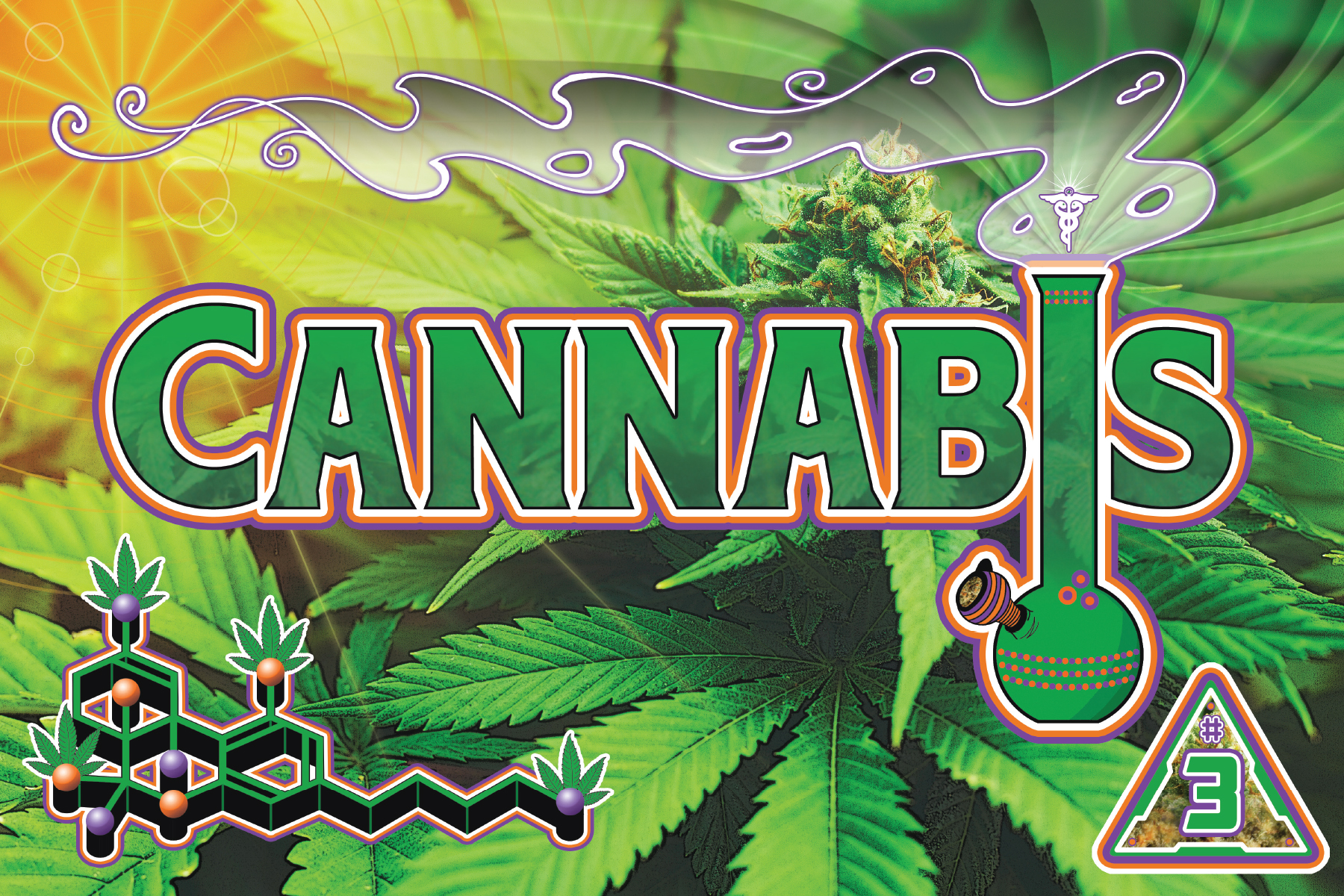
Cannabis
Post Date: February 9, 2014
Rachel Clark2023-03-28T16:19:28-07:00
Cannabis
What is cannabis?
- Cannabis (also called marijuana) is best known in its plant form. It contains over 100 cannabinoids, including the fabled THC and CBD, as well as aromatic compounds known as terpenes.
- Cannabis contains one major psychoactive cannabinoid, THC. Its primary non-psychoactive cannabinoid is CBD.
- THC begins as the inactive THCA in the plant, which becomes active when it’s heated (decarboxylated).
- Various “concentrates” of cannabis are manufactured, including hash, oil, and kief. These are very potent products (much more so than buds).
What are the effects?
- In small quantities, many users find cannabis to be both relaxing and stimulating in different ways. Sensory enhancement/sensitivity are common.
- In larger quantities, with stronger strains, or when orally consumed, the effects of cannabis may feel more psychedelic. Users may experience mild hallucinations, anxiety, euphoria, or time dilation.
- Cannabis may or may not increase appetite, depending on the strain.
- Cannabis tends to cause an increase in heart rate, red eyes, and dry mouth.
- Not everyone finds cannabis to be relaxing. Some people are particularly prone to anxiety/paranoia.
What is a typical dose?
- As with all psychoactive plants, dosage can vary significantly. The strain, the potency of a specific bud, the route of administration, and the specific brain of the individual consumer will all determine someone’s dose.
- If you’re just starting out and you’re smoking, take one small hit of whatever device you’re using and wait 15-20 minutes before taking another.
- If you’re just starting out and you’re taking edibles, try 2.5 mg of THC. Up your dose little by little until you find something that works for you. Full doses of edibles are usually between 5 and 50 mg of THC.
- If you’re just starting out and you’re using concentrates, take a very, very small inhalation from whatever device you’re using.
- Cannabis is usually smoked or vaped, though it can also be eaten in the form of edibles. (Eating the raw plant will not get you high because the THCA has not yet been activated into THC.)
- Joints, blunts, and spliffs are the most common methods of smoking, but a wide range of pipes, bongs, hookahs, and other devices are also used.
Be careful!
- Smoking anything, including cannabis, can irritate the lungs, throat, and mouth. Using vapes, low-temp dabs, or edibles instead of combustion (smoking) reduces irritation.
- High-temp dabbing increases the risk of throat/lung irritation (or even damage) because the oil is so hot. Try to low-temp your dabs whenever possible.
- Edibles can take several hours to fully kick in. Always wait at least two hours before eating more.
- Contrary to popular belief, it is possible to experience withdrawal after using cannabis daily for a long time. Withdrawal typically manifests as insomnia, appetite changes, anxiety, or irritability. Cannabis withdrawal is never life-threatening and is rarely anything more than a nuisance for a few days or weeks.
- Like any drug, it’s possible to use cannabis compulsively and develop a problematic relationship with it. It may be a good idea to take a break if you find yourself regularly using cannabis as a coping mechanism, or feeling very anxious at the thought of going without it for a period of time.
More harm reduction tips
- Cannabis edibles are metabolized differently than smoked cannabis. Smoking weed introduces both delta-9-THC and 11-hydroxy-THC into the body, but the oral route of metabolizing THC produces much more 11-hydroxy-THC than smoking does.
- 11-hydroxy-THC is more potent and longer-lasting than delta-9-THC, and tends to produce a more pronounced racing heart. This is why edibles can be so much more intense and unpredictable than smoking weed.
- Combining weed with psychedelics (including dissociatives like ketamine and nitrous) can drastically intensify the experience.

